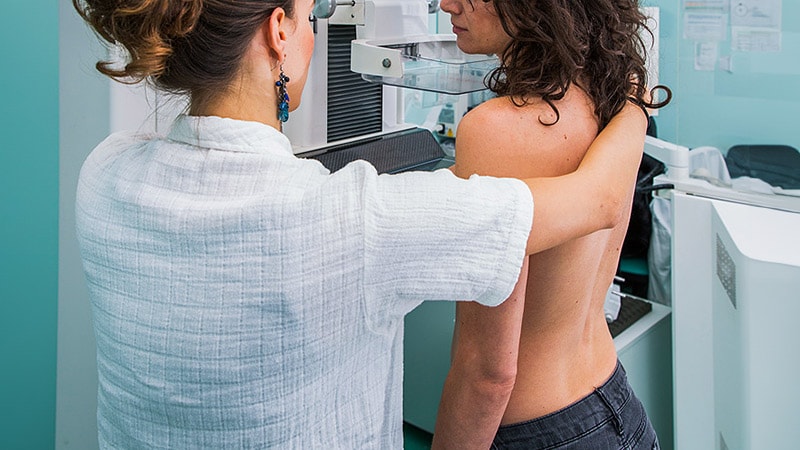A study led by researchers at the University of Manchester has found that screening for a panel of 18 genetic SNPs (SNP18) substantially improves the accuracy of risk prediction for breast cancer when combined with Tyrer-Cuzick estimates and mammographic density.
The finding is based on data from 9,363 women enrolled in the Predicting Risk of Cancer at Screening (PROCAS) study, 466 of whom were found to have breast cancer at baseline mammogram or during follow-up. Genotyping of 18 SNPs, visual-assessment percentage mammographic density, and classic risk assessed by the Tyrer-Cuzick risk model were recorded at cohort entry.
SNP18 polygenic risk score (OR) was higher in case patients (odds ratio [OR] 1.12; IQR 0.87-1.33) than controls (OR 1.01; IQR 0.77-1.19). It was almost perfectly calibrated across the spectrum of predicted relative risk subgroups, indicating that SNP18 is a very good predictor across the continuum of risk. The unadjusted interquartile OR was 1.56 (95% CI 1.38-1.77). Results were similar after adjustment for the Tyrer-Cuzick model (interquartile OR 1.54; 95% CI 1.36-1.75).
When combining the risk from the Tyrer-Cuzick model, mammographic density and SNP18, 16 per cent of cases and 9.5 per cent of controls moved into the higher risk category (≥5% 10-year risk) compared with using the Tyrer-Cuzick model alone. Only 5 per cent of cases and 4 per cent of controls moved out of this category. The number of cases in the higher risk group increased by an absolute 11 per cent.
The risk according to the Tyrer-Cuzick model had an AUC of 0.58 (95% CI 0.52-0.62). When mammographic density was incorporated, the AUC increased to 0.64 (95% CI 0.60-0.68), and when SNP18 was also incorporated, the AUC rose to 0.67 (95% CI 0.62-0.71). The findings are published in JAMA Oncology.



